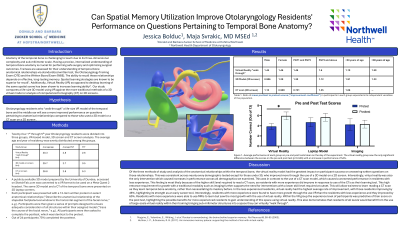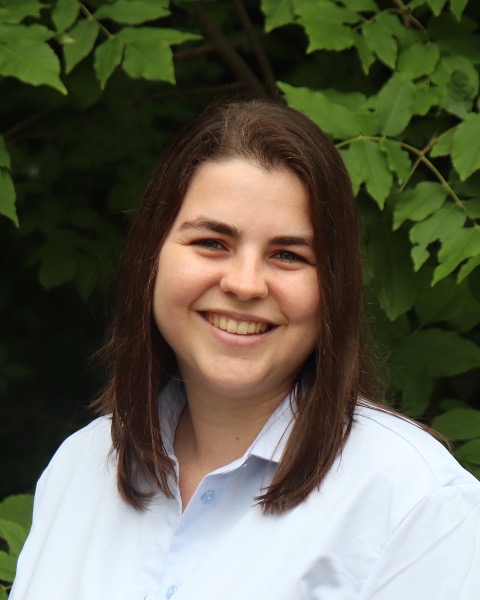Professional and Personal Development
(1104) Can Spatial Memory Utilization Improve Otolaryngology Residents' Performance on Questions Pertaining to Temporal Bone Anatomy?
Monday, September 30, 2024
12:00 PM - 1:00 PM EDT

Has Audio
Disclosure(s):
Jessica Bolduc, N/A: No relevant relationships to disclose.
Maja Svrakic, MD: No relevant relationships to disclose.
Introduction: Spatial memory is one of the most effective methods of information retention in humans. However, due to the sub-millimeter resolution of the anatomically complex temporal bone, its potential to assist in learning is limited. By recreating the space of the temporal bone in a larger immersive format using virtual reality (VR), we hypothesize that trainees would demonstrate superior ability to recall and retain key surgically relevant anatomical relationships as compared to more traditional teaching models and as tested on standardized written tests assessing this type of knowledge.
Methods: This is a prospective study conducted over a month on 24 trainees of various post graduate levels as a part of the standard annual temporal bone lab dissection instruction. Participants were randomly assigned to 3 groups, distinguished by method of instruction (VR immersive model, 3D model on a computer screen and analysis of a computed tomography [CT] scan). Each participant completed a pre-test and a post-test consisting of a standardized, written, multiple choice, or free response questions containing verbal descriptions of anatomical relationships of the middle ear and mastoid space. The main outcome measure was improvement from the pre-test to the post-test scores. Independent variables of age, years of training, and gender were collected.
Results: Participants who used the immersive VR model had significant improvements in their performance across the written anatomy tests (p = 0.02), unlike their peers using the 3D model or a CT scan on a computer screen who did not show significant improvements.
Conclusions: Virtual reality modeling of life-size immersive spaces are superior in conveying the complex anatomical relationships of the microscopic world of the middle ear and mastoid, and can be used to improve trainees’ performance on written tests addressing temporal bone anatomy.

Jessica Bolduc
Medical Student
Zucker School of Medicine
Brooklyn, New York, United States
Maja Svrakic, MD
Associate Professor
Northwell Health
New Hyde Park, New York, United States
